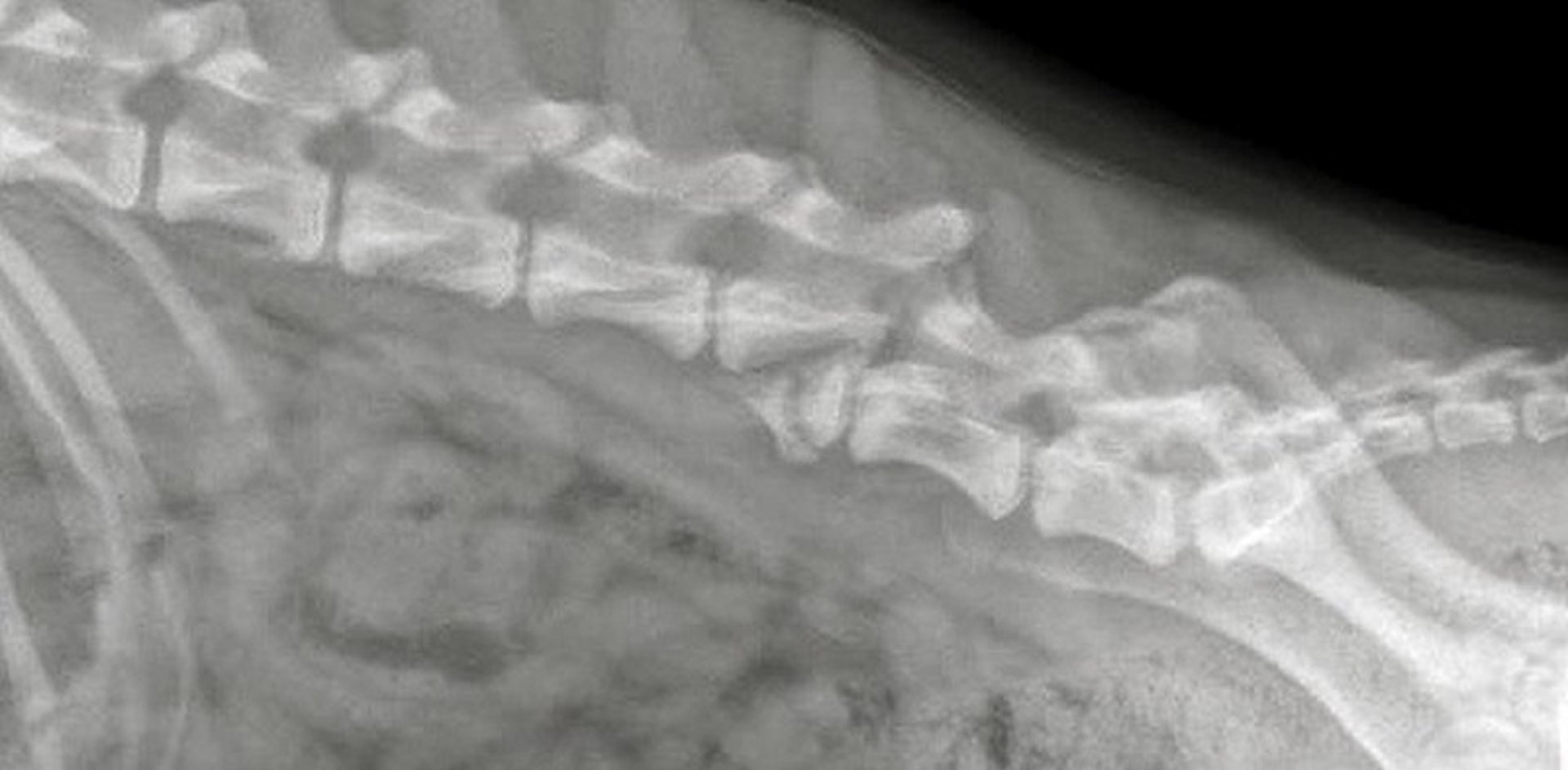Courtesy of Dr. William Thomas.
Courtesy of Dr. William Thomas.
Acute spinal cord injuries are commonly associated with spinal fracture or luxation. Common causes in dogs and cats are automobile accidents, bite wounds, and gunshot wounds. Falls are common causes in horses. Cattle are susceptible to injuries from breeding. Pathological fractures are common in cattle, sheep, and pigs with malnutrition or vertebral osteomyelitis. Damage to the spinal cord is caused not only by the primary mechanical injury but also as a result of secondary pathological changes, including edema, hemorrhage, demyelination, and necrosis. These secondary changes are due to biochemical factors, including the release of free radicals, leukotrienes, and prostaglandins that cause further injury to nervous tissue and compromise blood flow to the spinal cord.
Clinical signs of spinal trauma are typically acute and may progress in instances of unstable fractures or luxations. Severe thoracolumbar spinal cord injury may cause paraplegia with increased extensor tone in the thoracic limbs (Schiff-Sherrington phenomenon). Radiographs usually demonstrate vertebral fractures and luxations. However, in dogs with trauma, radiographs, compared with CT, reveal only ~75% of spinal fractures; therefore, advanced imaging is indicated in animals with suspected spinal trauma and normal radiographs. Animals with mild neurologic deficits often recover with 4–6 weeks of cage or stall rest and analgesics. Surgical reduction and stabilization is indicated for unstable vertebral injuries causing severe neurologic dysfunction. The prognosis is guarded for recumbent horses and cattle. In animals that have lost deep pain perception caudal to the lesion, the prognosis for return of neurologic function is poor.
